#Robert Blair Mayne
Explore tagged Tumblr posts
Text

SAS Rogue Heroes (2022)
#2022#film#series#TV show#television#aviation#WWII#SAS Rogue Heroes#Alfie Allen#John Steel Lewes#John Lewes#Jock Lewes#Lewes bomb#Connor Swindells#Sir Archibald David Stirling#Archibald David Stirling#David Stirling#Jack O'Connell#Robert Blair Mayne#Paddy Mayne#L Detachment#Special Air Service Brigade#Special Air Service#SAS#Long Range Desert Group#LRDG#Bagush#Egypt#North Africa#C-47
20 notes
·
View notes
Text




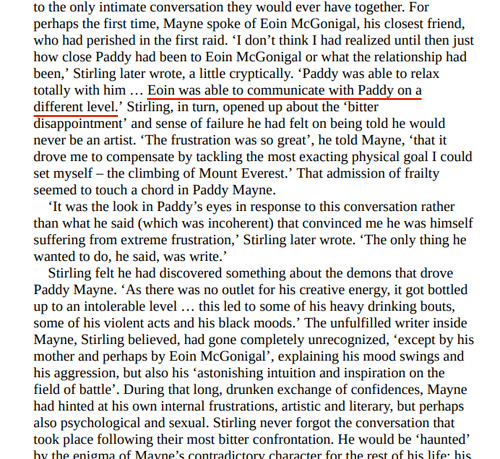


Ben Macintyre on Paddy Mayne's sexuality and Eoin McGonigal
#ben macintyre#sas: rogue heroes#robert blair mayne#paddy mayne#eoin mcgonigal#paddy x eoin#lgbtq#gay
244 notes
·
View notes
Text
Robert Blair Mayne

23 notes
·
View notes
Photo
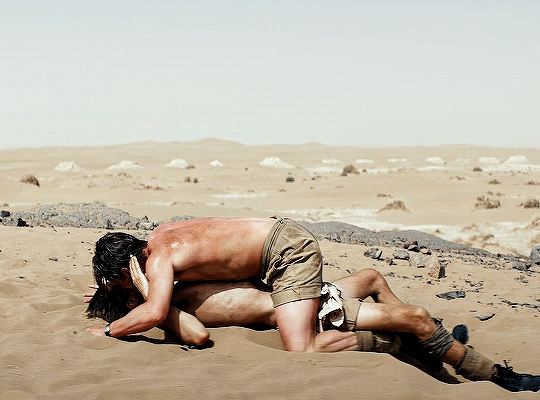
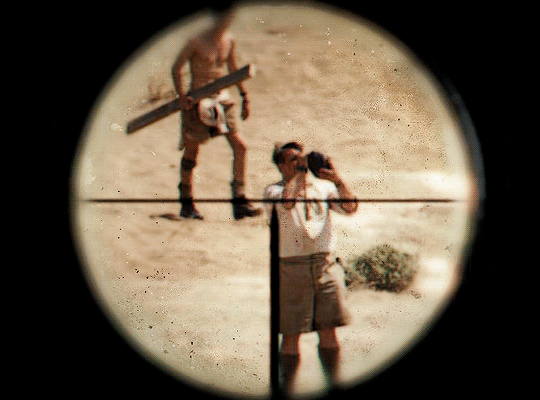
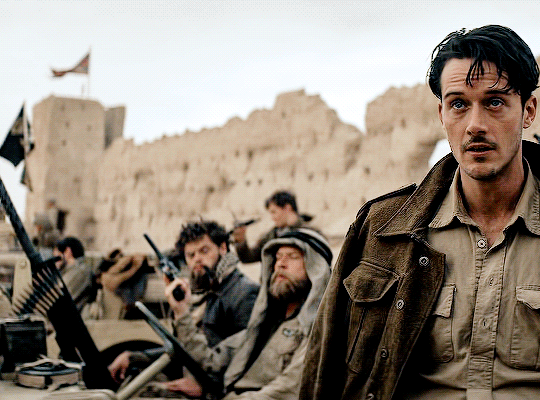

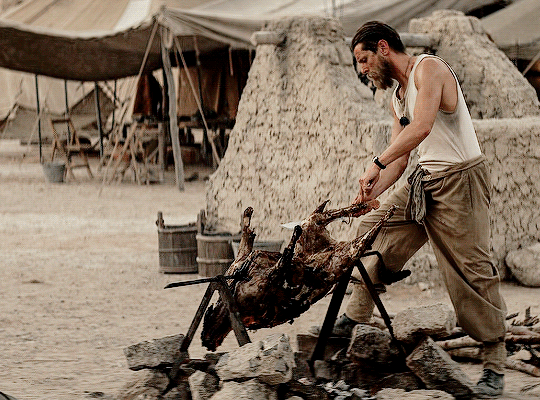

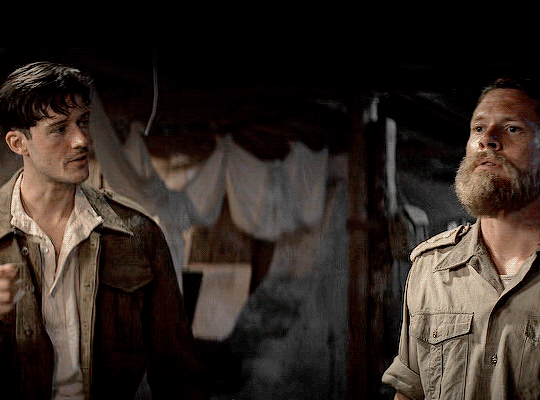
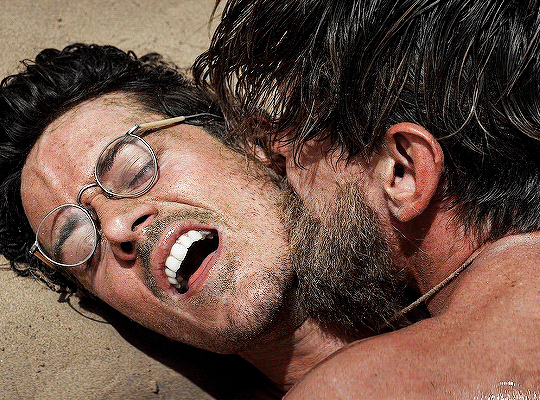
My commanding officer has some idea that you and I are similar; a shared love of poetry and philosophy. I wonder if it’s something more than that. Perhaps we should find out?
Jack O’Connell as Capt. Robert Blair “Paddy” Mayne & César Domboy as Lt. Augustin Jordan. SAS: ROGUE HEROES (2022-)
#sas rogue heroes#paddy mayne#augustin jordan#jack o'connell#césar domboy#perioddramaedit#*g#tv#everyone look at my new blorbos#this could be better but ps crashed TWICE while i was making this so this is what you get (:#i'll probably make an eoin set too but gimme like a week to recover first 😭
3K notes
·
View notes
Text
Is this a list of the same type of people?
Gerald Durrell
Derrick (Fredo Santana) Coleman - rapper - purple drank
Anthony Bourdain (TV Chef) - Heroin, Methadone, Cocaine, Alcohol.
George Herbert Scott (Airship Pilot), d.1930.
Grayson Murray, American golfer
Mark Lanegan, 57
Taylor Hawkins, 50
Steve Harwell, Smash Mouth Lead Singer, liver failure.
Lisa Marie Presley, 54
Raye (Rachel Keen), British Singer
Andrea Dunbar (Playwright, age 29 - brain hem orange).
Robert Louis Stevenson - hence Jeykel and hyde (aged 44, drugs inc alcohol)
Phil Lynott
Paul Walsh, Footballer.
Andy Warhol - “Although not as big a drug-taker as many of his entourage in mid-century New York, Warhol was addicted to Obetrol – marketed today as Adderall – an amphetamine diet pill that has a similar effect to speed.” - https://www.theguardian.com/science/2023/mar/24/drugs-and-alcohol-do-not-make-you-more-creative-research-finds?CMP=Share_iOSApp_Other
Jefferson King (Shadow)
Taylor Hawkins (died at 50) Foo Fighters, Drummer.
Jordon Peterson
Ivan Toney (Brentford and England footballer and gambler)
Wasim Akram (Cocaine)
Robson Green
Simon Pegg
Don Whillans, mountaineer
Stanislav Petrov (the man who saved the world)
Samuel Taylor-Coleridge (Laudanum)
Goethe
W.H.Auden, Benzedrine
Jared O’Mara (former MP)
Anne Robinson
Hayden Panettiere, actress https://www.thesun.co.uk/tvandshowbiz/22079654/heroes-hayden-panettiere-addiction-alcohol-opiods-nashville/amp/
Jennifer Elliott (daughter of Denholm Elliot)
James Mangan - 19th C. Irish Poet, influenced -
Shane MacGowan.
Sir William Carr (Pissing Billy)
James Gandolfini
Lanre Fehintola
Howard Hughes, OCD, Codeine
Kirkland Laing (Boxer)
Ian Royce, Comedian.
Bobby Liebling (lead singer, Pentagram)
Rory Hamilton Brown
Matthew Mellon (banking heir)
Nora Butlin
David Berman (silver Jews)
Ted Ngoy (the donut king - gambling)
Ernst Udet - German WW1 Ace, responsible for Nazi aircraft manufacture until suicide,1941.
Blair “Paddy” Mayne (famed early S.A.S. Soldier)
David Stirling (famed early S.A.S. Soldier)
Danny Cipriani
William Golding
Luke Sutton, sports agent
Bryony Gordon
Gaddafi
Paddy “Mad” Merrigan (Jockey)
Michael K. Williams (actor)
Robert Webb (British Comedian)
Mark McManus
Brian O’Nolan
Rodney Dangerfield
Tara Palmer-Tompkinson
Marco Pantani
Robin Smith (cricketer)
Dr. John (The Scatman)
Robert Havlin (jockey)
Kenneth Williams
Victor Willis (son of a baptist preacher - Village People.
Stu Ungar
Charlie Parker
Miles Davis
Harold Shipman
Danny Trejo (ends up dead on top of Tortoise in Breaking Bad).
Sandy Ratcliff (Sue Osman, East Enders)
James Hunt
Michael David Weiss (film injustice re safety needles)
Charlie Chaplin Snr. (Cirrhosis, 38)
Oisin Murphy (jockey)
Peter Shilton (gambling)
Marvin Gaye
Robert Young, actor, brother of Roger Moore
Dick Van Dyke
Yuri Gagarin
Christopher Farley (U.S. actor)
Ronald Lacey - played Dylan Thomas (1978) - Harry Ridler in Minder on the the Orient Express
Jordan Peterson
Tanya Sarne (Fashion)
Elizabeth Wurtzel (Prozac Nation)
Bradley Cooper
Tom Maynard (Cricketer)
Bobby Beasley (Jockey)
Toulouse-Lautrec
Baudelaire
Montgomery Clift.
Jay Kay
Mike McCready (guitarist - pearl jam)
Elton John
Heinrich Böll, German Writer, Pervatin, during WW
Andy Fordham (The Viking)
Alice Cooper
Phil Spector
Alan Watts
Mark Lanegan
Rupert Young - Will Young’s brother
Matthew Perry (Friends sitcom)
Susannah Constantine (TV host)
Hugh O’Connor, Actor, -1962-1995. Shot himself in the head on the day of his 3rd Wedding Anniversary.
Deacon Brodie - alcoholic sinner fire-runner and example used by Robert Louis Stevenson in J & H - a hundred years later - and a life that Stevenson tried to pursue himself
Desi Arnaz, American actor
Felicite Tomlinson
Demi Lovato
William Hurt (American actor)
Venedikt Vasilyevich Yerofeyev - Author of Moscow Stations, 1969
Olivia Channon
Willie Carson Jnr
‘Bloody’ Mary Coughlan.
Roy Orbison (yo-yo dieting)
Christopher Hitchens - thinkoholic, alcoholic, smoker
Emma, Lady Hamilton
Jan-Michael Vincent (Airwolf)
Maradona
Keith Gillespie,Footballer, Gambling.
Eddie Van Halen
Richard Kiel (Jaws)
John Bonham
Matthew Perry, American actor.
Stuart Cable - Drummer Stereophonics - choked on vomit.
Cameron Douglas
Chris Langham - cocaine / alcohol. (Went to prison for 6 months for download child pornographic images. Played Orwell in 2003 BBC film.). Career destroyed after that.
Johnny Vegas
Arthur Daley.
Mike Tyson
George Harrison
Alexei Rykov aka ‘Rykvodka’ Rightist Politburo member, Premier and co- ruler with Stalin and Bukharin ‒. Defendant in last show trial
Hans Fallada (Rudolf Ditzen) - German Author
Henry Pierrepoint - executioner father of Albert the executioner.
Bob Hindley (alcoholic father of Myra Hindley)
Simon Day (fast show)
Frederick Nietzsche (Opiu re m / chloral hydrate)
Tennessee Williams
Henry Willson - Hollywood agent (Cirrhosis)
Steve Caulker - footballer aged 25 (alcohol and gambling)
Tim Bergling (DJ Avicii) - aged 28
Verne Troyer (49)
Ashley Mattingly (playmate)
Jean Michel Basquiat - artist, 27, Heroin
Keith Levene, Founder member of The Clash, and Public Image Ltd
Dolores Riordan (46) lead singer of cranberries - died drowned in her bath 2018 Park Lane Hilton. Also anorexic and bi-polar.
Demi Lovato (ex Disney Channel actress)
Charles Baudelaire - laudanum and alcohol
Chris Leben (UFC fighter)
Mike Bell a.k.a. Mad Dog (WWE - wrestler)
Freddie Starr
Irvine Welsh
Dolores O’Riordan (alcohol / anorexia)
Dennis Price.
Shia LaBeouf (actor)
Rhys Thomas (Rugby)
Russell Pearce (Boxing)
David Plunkett Greene (Heroin)
Ron ‘Pigpen’ McKernon (grateful Dead,27)
Annabelle Neilson - Heroin / aristoc
Ray Wilkins
Jeff Hatch (NFL player)
Ryan Cresswell (footballer)
Jon Stewart (guitarist, sleeper)
Alexander || of Russia.
Otto Gross (influenced Jung) - addict - 1877 to 1920. 42.
Oskar Schindler
Phil Lynott
Shaun Ryder
George Brown MP
Paul Ryder (Bassist)
Gary Oldman
Peter Edward "Ginger" Baker, English Drummer.
Mac Miller / U.S. rapper (26)
Jeff Hanneman - Slayer - cirrhosis, 49
Gary Busey (American actor)
Philip Larkin (half a bottle of sherry at sunrise).
Hunter S. Thompson - pro addict - suicide Feb 2005
Gregg Allman, American Singer / Songwriter
Coolio (Artis Leon Ivey)
Martin Gore (Depeche Mode)
Dave Gahan (Depeche Mode)
William Faulkner. (American Writer)
Lord Haw Haw (William Joyce)
Eugene O’Neill. (American Writer)
Anthony Burgess
Donald Maclean
Kim Philby
Ellen Philby - wife of spy Kim Philby (47)
Anthony Blunt
Ringo Starr
Jerry Lee Lewis
Ricky Hatton
John Ford (Film Director)
Jack London (Author of John Barleycorn novel) morphine overdose and alcoholism
Tom Chaplin, Lead Singer, Keane.
Nico - H - velvet underground
Art Pepper
Liza Minnelli
Richard Bacon
Jay Kay (Jamiroquai)
Tobey Maguire
Christian Slater
Chris Cornell (lead singer of Soundgarden)
Max Jacob (French Post)
Malcolm McDowell
Fred Trump Jnr. (Eldest brother 1932-81) - alcoholism aged 42.
Owen Wilson
Gary Oldman
Keith Flint (Prodigy)
Demi Moore - actors
Danniella Westbrook
Roger Ebert (Film critic)
John Cassavetes (great director) - hobnailed liver, 59. Q.v. Under the influence (1974) - starring his co-alcoholic and co-dependent wife, Gena Rowlands (who was nominated for an Oscar for her portrayal of progressive madness).
Bill Evans - Heroin - jazz
Suroosh Alvi - founder of Vice media - ex Heroin
Gary Fraser - Director of T2
Trainspotting - ex Heroin
Keith Floyd.
Ant mcpartlin
Tom Hardy (aa)
Steve Coogan
Kenny Sansom
Dante Gabriel Rossetti - painter -(1828-1882) became addicted to chloral, with whisky chasers
Philip Roth - American Novelist (Halcion sleeping pill)
Lee Marvin
Bryony Gordon - terrible telegraph columnist
‘Mad Jack’ Byron
Chet Baker - Jazz Trumpeter
Berlioz
Ray Charles - Heroin.
Sir Edwin Landseer (Laudinum)
John Hurt (died 28 Jan 16 pancreatic cancer ages 75)
Anthony Eden (Benzedrine) Drinamyl also known as ‘purple hearts’ to take him up and up to four sleeping pills a night to take him down. Eventually they stopped working - he couldn’t sleep and the doctors said the pharmaceutical solution had run its course - and he had to be evacuated to Jamaica for a few weeks - presumably to withdraw, just after Suez and a Sterling crisis. https://academic.oup.com/qjmed/article/98/6/387/1548168 - from Dr David Owen - concluding with the line ‘a fit and well Anthony Eden would not have made all those mistakes’.
Christopher Walken
Alistair Maclean - later on.
Al Pacino
Andrew Symonds (Australian Cricketer)
Margaux Hemingway (grand-daughter / supermodel)
Amy Winehouse (27)
Brian Jones (27) Rolling Stones
Jimi Hendrix (27)
Janice Joplin (27)
Jim Morrison (27)
Rudy Lewis (27) The drifters
Alan Wilson (27)
Dickie Pride (27)
Ron “Pigpen” Mckernon (27)
Kurt Cobain (27)
Dash Snow (27) - artist
Gary Thain (27) Bassist, Uriah Heep
Pamela Courson (27) Morrison’s wife, Heroin overdose, 3 yrs later in ‘74.
See also - https://en.m.wikipedia.org/wiki/27_Club
Fred Archer (29) gambling - shot himself.
Dean Martin
Eve Babitz
Pete Townsend
Courtney Love
Kevin Lloyd (Actor, The Bill)
Amedeo Modigliani
Diego Maradona
Brett Favre
Babe Ruth
Paul Merson (drink and gambling)
Bill Werbenuik (Snooker)
Kirk Stevens (cocaine - Snooker)
Mark E. Smith - d.2018. Lead singer of the Fall. 60.
Danielle Westbrook
Mary J. Bilge
Alec Baldwin (actor)
Vince Taylor from Isleworth - inspired Ziggy Stardust.
Douglas Kenney - founder of National Lampoon, 33, probable Suicide. Hawaii.
Alan McGee - Founder of creation records and property developer
Patrick Swayze
John Skipper, (former) president ESPN
David Cassidy
Steven Tyler (alive)
Hubert Selby Jr - author of last exit to Brooklyn - died sober even refused morphine.
Etta James
Slash
Bradley Cooper
Calvin Harris (Scot dj)
Eva Mendes
Colin Farell
Al Pacino
Craig Charles
Davina McCall
Anthony Hopkins
Rob Lowe
Phil Michelson (gambling)
Melanie Griffith
Jamie-Lee Curtis
Moby
W. C. Fields
Jean-Claude Junker
Christine Dolce (queen of MySpace) - cirrhosis
Franklin pierce - us president - cirrhosis
Chernenko - soviet leader 84 - cirrhosis
Jimi Hendrix - cirrhosis?
Billie holiday - cirrhosis
Jack Karouac - cirrhosis
Rob Lowe - alcoholic - 27 yrs sober
Sean Hughes (Irish comic) - cirrhosis
List of people with cirrhosis https://m.ranker.com/list/famous-people-with-cirrhosis/celebrity-lists
Etta James
Francis Bacon
Lucian Fraud (gambling)
Bobby Davro
David Warner - AUS cricketer
Baudelaire
Jesse Ryder - NZ cricketer
Herschelle Gibbs - SA cricketer
Alan Hudson (footballer)
Paul McGrath (footballer)
Kenny Samson (Footballer)
Garrincha (Brazilian Footballer)
Hank Williams aged 29
Marvin Gaye - crack before he was shot by father
Mickey Mantle (baseball player, Cirrhosis)
Joseph McCarthy (anti-communist)
Gilbert Harding - "The Rudest Man in Britain" 1907-1960.
John Paul Getty III
Caroline Aherne
Chris Difford - squeeze / clouds
Gary Shail - spider in quadraphenia
8 Mile actress
NIna Simone
Lord Lucan
Lady Lucan
Goering
Christy Brown
Edward St Aubyn
Rick Stein
Ronnie O'Sullivan (Snooker Player)
Chris Cornell
Denis Johnson (Author of Jesus' Son, 1992)
Dermot Reeve
Joey Barton
Will Self
Charles Kennedy MP (intracerebral haemorrhage)
Eric Joyce MP
Debbie Harry (Blondie)
Sir Anthony Eden - Benzedrine - buried at st Mary's church, alvediston. Un-respected.
Luvo Manyonga SA long jumper Olympic silver medallist 2016 - crystal meth
Ian McShane - Lovejoy, Deadwood - cocaine / alcoholic - 28 yrs since first AA meet.
Colin Milburn (cricketer)
Tom Petty (Heroin)
James brown
General Gordon of Khartoum - alcoholic - (according to Lytton Strachey)
Errol Flynn (absolutely everything) - in secret lives at the end "Errol Flynn made the fatal flaw of confusing his art with his life - in film they applaud Robin Hoods and rascals - in real life they tire of them soon... They stand by to let the person destroy himself". Heart problems and Cirrhosis.
Tyrone Power - 1 yr after The Sun Also Rises aged 44
Charlie Wilson US politician cv.film
Brian Clough
Sean Ryder
Greg Merson 2014 WSOP Main Event winner
Tubby Hayes - British Jazz - Heroin
Phil Seaman - Drummer - Heroin
Rick Parfitt (Status Quo)
Ian Kilminster (Lemmy)
Jack wild (oliver in artful dodger) aged 53 mouth cancer
Joe meek - pills - Telstar
Rasputin (alcohol and sex)
Boris Yeltsin
Paris Jackson (17) Michael's daughter
Jimmy pegg - walker in dads army - 39
Alexei Stakhanov (coal miner)
Seymour Hoffman
Lo ' David Coyle - Mr Bates in Downton Abbey
David Cassidy - 70s singer / heartthrob
Simon Danczuk MP
John Belushi
Whitney Houston
Bobbi Kristina Brown
William S Burroughs - writer, Heroin
William S Burroughs Jr. - Aged 34 - had liver transplant - cirrhosis
Amy winehouse
Brian Epstein - in a totally white bathroom - the only art was a giant picture of El Cordobes. And he wanted to give up managing The Beatles to manage bullfighters in Spain. L. Oo
Dante Gabriel Rosetti (Laudanum), Chloral, Alcohol)
Jimmy greaves
Mary Todd go. F FB
ST Coleridge (both Laudanum)
Sigmund Freud - a lot to answer for - cocaine
Irvine Walsh
Malcolm Lowry 1957
F. Scott Fitzgerald
Michael Phelps - most decorated Olympian
Tony Curtis
Robbie Williams
Mel Gibson
Sir James Chadwick (sleeping pills) sleeping on fear his work on a bomb would lead to mass destruction
Charles James Fox - cirrhosis whilst in office as Foreign Secretary - also Ascites (7 pints of fluid drained at death also 35 gallstones found) - lived in Chertsey and Foxhills, prodigious gambler.
Barry humphries
Daniel Radcliffe
Jack Dee
Jack karouac
Ian Fleming?
William Holden (actor, Bridge on the River Kwai)
Brad Pitt
Len fairclough
Malcolm Lowry (under the volcano)
John le Meisurer
James Beck (Alcoholic) Dads Army
Arthur Lowe - Dad's Army
Clive of India
Frank skinner
Rodney king
RD Laing (Dr)
Richard Hughes (jockey)
Johnny Murtagh (Jockey)
Jeremy Wolfenden
Jockey Wilson
Diego Maradona
John McAfee - dry drunk
Antony Hopkins
Michael Barrymore
Tara fitzgerald
Gazza
Tiger Woods https://www.thetimes.co.uk/article/tiger-woods-avoids-jail-on-driving-charge-dp9f6gv7n
Lou reed
Marquis of Blandford
F Scott Fitzgerald
Beethoven
Edgar Allan Poe
Diana Ross
Robin Williams
Elton John
Eminem
Lilly Allen
J.L. Austin, Academic, Lung Cancer, 48.
Johnny Cash
Samuel l Jackson
Frank Sinatra
Buzz aldrin
Ben affleck - gambling / alcohol
Ulysses Grant 18th president
Benjamin franklin
George bush jar
Alexander the Great
David Yelland Former editor of Sun.
David Bowie / Ziggy Stardust (Coke)
Eric Clapton
Bill Wilson
W.C. Fields (died of gastric haemorrhage)
Blondie - whose music is used to advertise baileys
Stephen King
Hermann Goering (Morphine)
Hermoine Norris (yellow card)
Brad davis
Tom Maynard
Alec Baldwin
Morgan Freeman
Charlie watts both recovers
William f Buckley
Charles Kennedy
Jamie lee Curtis (daughter of tony Curtis)
Lana del Rey
Barnaby conrad (bulls)
Yazz Yasmin Evans
Peaches Geldolf
Caroline aherne
King Richard 3rd died 1485 battle of bosworth
James beck (dads army)
Fat boy slim
Calvin Harris
50 cent
Prince (Perocet)
Francis Bacon
Anthony kliedis
Shania twain
Peter Townsend
Leona Lewis
Jessie j
Alice cooper
Moby
Ringo Starr
Asquith?
Constantine Chernenko (Soviet president - cirrhosis)
Chris difford (lead sing squeeze)
George IV - gambling mainly.
Henry VIII - sypillus (food issues - drink - sex)
Ozzy osbourne
Jack osbourne
Kelly osbourne
Steve coogan
Paul Gascoigne
Midge Ure
John Daly
Steven Tyler
Nicole Ritchie
Drew Barrymore
Naomi Campbell
Waylon Jennings
Nick Nolte
Martin Sheen
Keith Moon
Kurt Cobain
Rt Hon George Brown MP, Lord George Brown (1914-1985) Labour Belper, 1945-70, excused by his staff of being ‘tired and emotional
Paul Nicholls (ex Eastenders)
Alan Ladd
Jack Lemmon
David Hasselhoff
Errol Flynn - ended up supporting The (Fid)Del - worst film ever - Cuban rebel girls and the Cuban story doc - 1959 - year he died - revolution for alcohol, cocaine, and heroin - these two pieces of art marked the ego, deciept and denial.
Truman Copote
Billy Joel
Jimmy White (Snooker, Crack)
Stephen King
Ernest Hemingway
Diana Ross
Orson Welles (and father)
Ben Affleck (drink / gambling)
Abi Evelyn t (yellow card)
Trinny Woodall
Don Simpson - producer of top gun bev hills cop
Peter Doherty
Gary Richrath (REO Speedwagon guitarist)
Robert Newton - born Shaftesbury 1905 - died Beverly Hills 1956 - heart attack - Shaftesbury most famous alcoholic. Aged 50.
12th Duke of Marlborough - Ex Marquis of Blandford
Henry VIII
Thomas de Quincey - confessions of an English opium eater. (Actually laudanum).
Pat Eddery
Richard Hughes
Dr William Stewart Halsted - inspiration for Clive Owen's Dr John Thackery (The Knick).
Nero?
Frank Skinner
Alexander the Great?
Eric Joyce (former MP)
Robert Mitchum
Osgood )brother of Peter
Lionel Bart
Ira Hayes (flag man)
John Bonham (Windsor)
Joseph "Joe" McCarthy - commies
Dylan Thomas
James Joyce
James Thurber
Gary Moore (singer, 80s)
Jim Morrison (27)
Franklin Pierce (US President, 1853-1857. Liver cirrhosis 1869 aged 64.
Macaulay Culkin
Michael Jackson
Boy George
Carrie Fisher
Beth Morris (voice contestant) - cocaine
Hitler (Barbiturates)
Mussolini, Stalin, Eichmann.
Mao Zedong (barbiturates)
Jeffrey Dahmer (Alcohol)
Johnny Depp (booze)
Rodney Dangerfield
Mickey Mantle (baseball, booze)
Billie Holiday
Melanie Griffith
Ewan McGregor
Tony Hancock
Guy Burgess (spy)
Diana Ross
Shane MacGowen
Craig Charles.
Paul Verlaine (French 19th C Poet)
Toulouse-Lautrec
Melanie Griffith (Percocet)
Elvis (Percocet)
Cindy McCain (wife of John MCCain, Percocet)
Gerald Levert (Percocet)
Bill Werbeniuk
Ant McPartlin
Prince (Fentanyl overdose)
Lil Peep (Fentanyl overdose)
Alex Higgins
Bon Scott (AC/DC)
Kirk Stevens (Cocaine)
La Galue (Louise Weber) - queen of Momartre - can can dancer.
Jeff Hanneman (singer, Slayer)
Yves Saint-Laurent
Florence Ballard (The Supremes)
Colin Milburn (Cricketer)
John Barrymore (Early Hollywood Actor)
Kemal Ataturk (Cirrhosis)
Gail Russell (Early Hollywood icon)
Helen Morgan (American singer and actress)
Ulysses Grant
George Best
Calum Best
Verne Troyer
Keith Whitley (American Country music singer)
William Falkner (American author)
Caspar Fleming (Novelist’s son)
Anna Nicole-Smith
Yootha Joyce (Mildred)
Jerry Bailey - us jockey)
Joe Namath
Walter Swinburn (both dead) alcohol and also eating disorder
Bobby Fischer (Chess)
Willie Thorne ( gambling)
Kirk Stevens
1 note
·
View note
Photo

I served to my best my Lord, my King and my Queen, and none can take that honour away from me.
- Lt. Col. Blair ‘Paddy’ Mayne (when asked by King George VI as to why he had not received the Victoria Cross in recognition of his courage and bravery)
Lieutenant Colonel Robert Blair ‘Paddy’ Mayne to some was simply Colonel Paddy. The Northern Irish man was one of the founding members of the Special Air Service or SAS.
The elite commando unit was the brainchild of Scots Guard officer Captain David Stirling. Their aim was to act behind enemy lines and take the fight to Rommel in the desert. Although Mayne was languishing in a prison cell after an altercation with a superior officer, he was just the man for the job.
Stirling formed the L Detachment Special Air Service of sixty men, including Colonel Paddy. Mayne’s reputation preceded him and his actions on the Litani River had brought him to Stirling’s attention.
Over the course of the war, the legend of Colonel Paddy would grow. Stories of drinking and brawling were commonplace. And yet his exploits hid a cultured man - a trained lawyer with an aesthetic appreciation of poetry of AE Houseman as well as excelling as a Northern Ireland and British Lions rugby international player and an amateur boxer.
It was his fearlessness behind lines, though, that earned him a reputation as a heroic warrior and a place in SAS lore. Paddy’ Mayne was to become a fighting legend, and a pitiless killer in war. Even his SAS comrades thought him cold-blooded and overly ruthless.
Stirling thought Mayne had gone too far on occasions in killing the enemy. And yet Mayne typified the SAS recruitment policy, whose finds were the “sweepings of prisons and public schools”. In countless missions behind enemy lines, Paddy Mayne destroyed more aircraft than any fighter pilot on either side during the course of the war between Britain and Germany.
He was to go on and become one of the most decorated British soldiers during the war: DSO & 3 bars; 39-45; Star Africa Star with 8th Army Bar; Italy Star; France & Germany Star; Defence Medal; War Medal with Oak Leaf; Legion D’Honneur; Croix De Guerre with Palm.
#paddy mayne#sas#quote#special forces#british army#military#history#britain#second world war#operator#special air service#david stirling#L detachment#the regiment#icon#irish
102 notes
·
View notes
Photo


The Medals of
Lieutenant Colonel Robert Blair "Paddy" Mayne DSO & 3Bars
(Legion of Honour & French Cross of War) 1915-1955
Born in Newtownards N. Ireland Colonel Mayne was barrister, boxer, rugby international (Ireland & Lions) and a founding officer of the SAS. Many people argue that the third bar to his DSO should have been a Victoria Cross. This may be so, and all manner of theories describe the political reasons why the award wasn’t made. The more likely reason is a practical one; awards of a VC are required by law to be witnessed by at least one, ideally two, commissioned officers, and no other officer was around to tell the story! Mayne left the army after WW2 and returned to the Bar. He was killed in car crash in 1955 -probably the result of his own heavy drinking. To anyone who has worn the Queen’s Uniform he remains the ultimate legend! Faugh a Ballagh!
4 notes
·
View notes
Note
Oh my god someone is finally talling about this show!!!!!!
As someone in desperate need of fic for this little known show, dear god please watch it and fall in love as I have with the magnificent Robert Blair 'Paddy' Mayne. 😍



Just trust me on this one 😊
You like scruffy men?
Watch BBC's SAS Rogue Heroes. And keep an eye on Paddy Mayne.

6 notes
·
View notes
Text

SAS Rogue Heroes (2022)
#2022#film#series#TV show#television#aviation#WWII#SAS Rogue Heroes#Connor Swindells#Sir Archibald David Stirling#Archibald David Stirling#David Stirling#Jack O'Connell#Robert Blair Mayne#Paddy Mayne#Alfie Allen#John Steel Lewes#John Lewes#Jock Lewes#Lewes bomb#L Detachment#Special Air Service Brigade#Special Air Service#SAS#Long Range Desert Group#LRDG#Bagush#Egypt#North Africa#C-47
3 notes
·
View notes
Photo



Lieutenant Colonel Robert Blair "Paddy" Mayne from Newtownards, county Down, was a founding member of the Special Air Service (SAS), an Irish international rugby player, cricketer and amateur boxing champion.
His war-time exploits during WWII were the stuff of a Boys' Own adventure. He was one of the most decorated soldiers of the British Army and was the first to receive the Distinguished Service Order four times. His adventures on and off the battlefield were legendary.
You can read an entertaining article on his badass wartime exploits here... http://www.badassoftheweek.com/index.cgi?id=54504828545
#paddymayne#blairmayne#WWII#badass#ulster#soldier#bravery#SAS#LongRangeDesertGroup#Irishemn#Ulstermen#fightingIrish#IrishRugby#ulster rugby#blair mayne#paddy mayne#Irish rugby#fighting irish#Irish#Irishmen#S.A.S.#british army#northern ireland
11 notes
·
View notes
Text
It’s the 14th of December today do you know what that means?
that’s the day paddy mayne died, RIP.
15 notes
·
View notes
Photo
Lieutenant Colonel Robert Blair "Paddy" Mayne DSO & Three Bars (11 January 1915 – 14 December 1955) was a British Army soldier from Newtownards, capped for Ireland and the British Lions at rugby union, lawyer, amateur boxer and a founding member of the Special Air Service (SAS). During the course of the Second World War he became one of the British Army's most highly decorated soldiers and by destroying 47 aircraft in a single action he may well have destroyed more German aircraft than the RAF's highest scoring ace. He was controversially denied a Victoria Cross.
...
[source]
LRDG Scorpion pin and patch:



Bravest of the brave. SAS Lt Col Paddy Mayne DSO and three bars, one of the most decorated soldiers of the Second World War. This larger-than-life Irish warrior first achieved fame on his devastating early desert raids on airfields and other enemy instillation thanks to the navigational skills of the LRDG, who took Mayne, Stirling and their men to and from their targets. Mayne later led the Special Raiding Squadron/1st SAS to further glory in Sicily, Italy, France, Belgium, Holland and to final victory in Germany.
Photo & Caption featured in Sting of the Scorpion: The Inside Story Of The Long Range Desert Group by Mike Morgan.
155 notes
·
View notes
Photo

Lieutenant Colonel Robert Blair "Paddy" Mayne DSO & Three Bars (11 January 1915 – 14 December 1955) Founder member of the Special Air Service. Hard as nails.
13 notes
·
View notes
Text
The Irish Lion: The legend of Paddy Mayne and the SAS
The first crop of Special Air Service (SAS) soldiers were a motley crew of bar-room brawlers, public school hell-raisers, eccentrics and misfits but they all embodied the tenets of courage, honour and ingenuity.
Hatched in the desert and borne out of the necessity of World War Two, the SAS or known as ‘the regiment’ was started by the 6’5” ‘Phantom Major’ David Stirling nicknamed him The Giant Sloth for his chronic laziness and fondness for slipping out of camp for nights of carousing. He hated marching, military discipline and disdained authority. By all accounts a terrible soldier but he was brave and cunning.
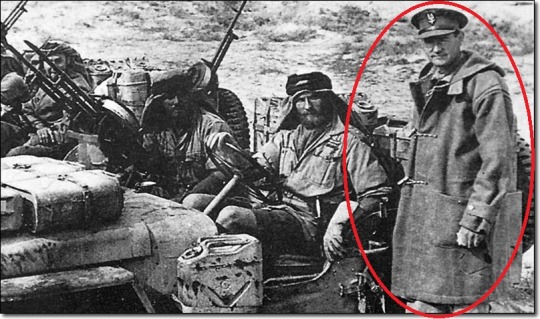
The principle behind the SAS was simple: To use small bands of irregular elite soldiers who could operate by stealth behind enemy lines, destroying aircraft, supplies and hopefully also enemy morale as a by-product of causing vast mayhem. One perception of the unit at this stage is as a motley band of scruffy and rebellious commandoes striking out of the darkness at the Nazis. The latter part of that is true, the former needs qualifying – all the men were disciplined operators drawn from commando units. They sometimes grew out unkempt beards because they were in the desert and away from camp for long stretches. It, of course, helps glamourise things more that Stirling himself was captured and eventually transferred to the infamous Colditz Castle after multiple escape attempts.
In his absence, responsibility for the SAS passed to his second in command, the larger-than-life Irishman Robert Blair ‘Paddy’ Mayne.
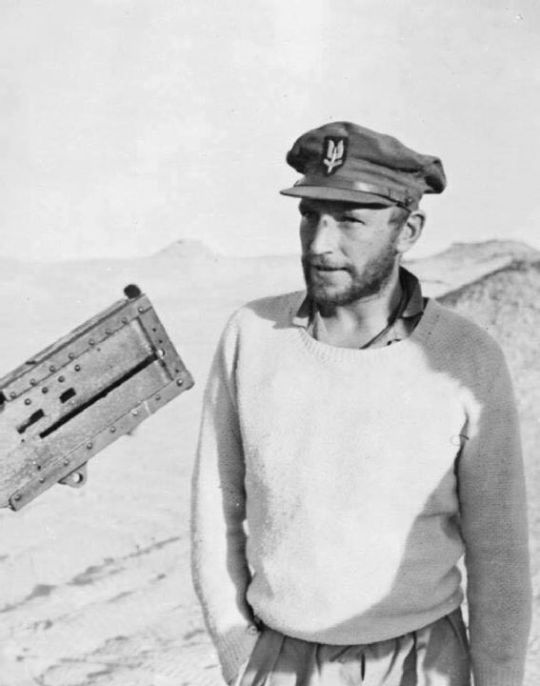
Known to be a terrific soldier with tremendous battlefield intuition, Mayne was allegedly recommended to Stirling by his friend Eoin McGonigal. He was brave, unconventional and a force to be reckoned with – the perfect man for the nascent SAS. There was just one problem: He was languishing in prison for striking his superior officer Geoffrey Keyes (or perhaps it was for threatening him with a bayonet?). Curiosity sparked, Stirling went to meet Mayne in his jail cell.
An account of their initial meeting appears in Alan Hoe’s biography of the SAS founder. At first, Mayne was reluctant to join Stirling’s unit, known at that point as ‘L Detachment’: “’I can’t see any prospects of real fighting in this scheme of yours’. There was undisguised scepticism on his face. “’There isn’t any. Except against the enemy’. It was the right reply because Mayne began to laugh. “’All right. If you can get me out of here I’ll come along’. He extended his huge hand. “’There’s one more thing’, Stirling said, ignoring the hand. ‘This is one commanding officer you never hit and I want your promise on that’. He reached out for the hand.
It wasn’t just the partnership that became legendary. On the heels of his stunning military successes, a number of stories about Mayne sprang up that added to the legend.
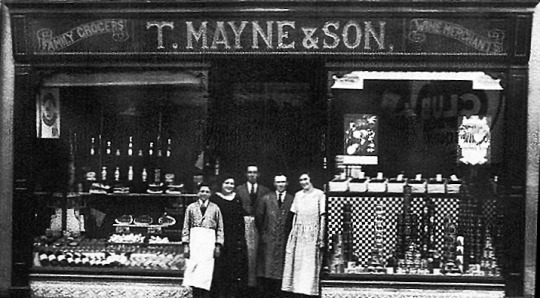
The son of William Mayne and Margaret Boyle Vance. Robert Blair "Paddy" Mayne was born on 11th January 1915. He was born into a wealthy Presbyterian family and the sixth of seven children, four boys and three girls. He grew up on the 41-acre grounds of the Mount Pleasant estate overlooking the town of Newtownards, County Down in Northern Ireland. Educated at Regent House School, he played cricket, rugby and golf, excelling in each while also demonstrating an aptitude as a marksman in the rifle club.
While at Queen’s in Belfast studying law to eventually qualify as a solicitor (lawyer), he took up boxing and within a matter of months won the Irish Universities Heavyweight title in August 1936. He made his Ireland rugby debut against Wales at Ravenhill in 1937 and the last of six appearances two years later, coincidentally against the same opposition in Belfast. His talent was recognised in selection for 1938 Lions tour to South Africa, where he made quite an impression on and off the pitch. Mayne could tolerate any physical challenge but was unable to cope with boredom and when of a mind to do something expected full compliance from acolytes, willing or reluctant. Breaking hotel furniture during drunken stupors were not uncommon.

His drunken off-pitch exploits couldn’t camouflage his innate ability as a gifted rugby player. Mayne lined out in 17 of the 20 provincial games and all three tests against the Springboks; having lost the first two he was singularly influential in securing a victory for the Lions in the third test.

The late Sean Diffley, rugby correspondent and author, wrote of the talented rugby second-row: “Mayne was a Viking, a throwback to the ancient days of towering warriors, gentle and charming when in repose, but fierce and dangerous when aroused, and a ‘hyphenated’ nuisance when he had a couple of jars. His fierce dark physical outbursts may well have been the stuff of legend, but they were not always fun to those immediately concerned, and they were a great cause of worry to his friends. There was the case of the Irish player for instance, who in 1939, was thrown out of the window of the Swansea hotel by Mayne during the post-match celebrations. Witnesses were thankful that it was a ground floor window and that the player came to no harm, but it was not simply high jinx either that caused the incident, but the result of Mayne brooding darkly on something that is now long forgotten.”
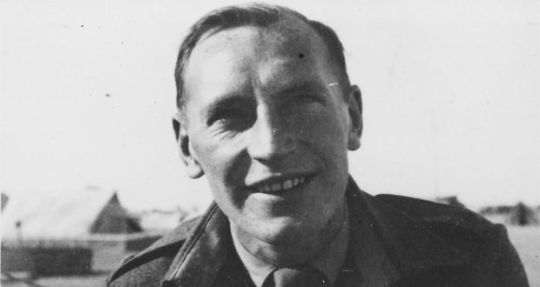
At the outbreak of the Second World War, Mayne received a commission in the 5th Anti-Aircraft Battery, in April 1940 joined the Royal Ulster Rifles and following Dunkirk volunteered for the 11 (Scottish) Commando.
He was mentioned in dispatches for the impressive manner in which he commanded his troop in the Litani River Raid in Lebanon and recruited by David Stirling for his newly formed SAS unit.
There are tales of Mayne shooting the floor around the feet of a bar owner who overcharged and was rude to him, and the 2004 documentary ‘SAS Warrior: The Life of Paddy Mayne’ reports that an intoxicated Mayne once unloaded his pistol into a drinking companion.
The murder is said to have been covered up.
But many of these stories are untrue, or at the very least they require contextual explanation.
Take for instance the story that Mayne was in prison and awaiting a court-martial for striking his commanding officer, Geoffrey Keyes, later posthumously awarded a Victoria Cross, but whom the Irishman considered an upper-class twit. That Mayne had no time for the privileged caste is part of Mayne’s myth making.
Many historians now dispute the veracity of the story. There is no record of Mayne’s arrest and David Stirling, as author Gavin Mortimer and other writers of the SAS Regiment have written, was prone to exaggerate to mischievously feed the legend.
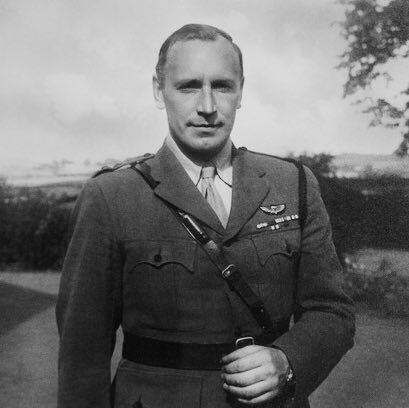
Indeed the story that Mayne was imprisoned for striking his superior officer, Geoffrey Keyes because he wasn’t selected for a raid to kidnap or kill Erwin Rommel makes no sense. The SAS were drawn from Nos 7, 8 and 11 Commandos, operating around the Mediterranean in 1941. (Commando were units containing around 500 well-trained troops). Keyes and Mayne were both in 11 Commando, which was decimated in a mission in Syria earlier that year. By the time it was reconstituted and the Rommel Raid conceived, Mayne had already left the unit. In any case, it’s just as well Mayne did not participate – the mission failed (because Rommel wasn’t there) and Keyes, along with many others, didn’t make it back.
Instead, Mayne, would meet Stirling in North Africa months before, and not in a prison cell either.
It was he who, in fact, recommended his friend Eoin McGonigal to Stirling, not the other way around.
Stirling was not looking for a modern-day incarnation of a Viking berserker. On the contrary, the founding philosophy of the SAS (then known as L-Detachment) indicates a need for extreme heroism but also extreme professionalism: “An undisciplined TOUGH is no good, however tough he may be. Most of ‘L’ Detachment’s work is night work and all of it demands courage, fitness and determination of the highest degree and also, and just as important, discipline, skill and intelligence and training.”

The odd thing is that life in the SAS during World War 2 was perfectly exciting enough. There simply wasn’t any need to make up tall tales. Mayne himself said as much in a letter: “(T)here is no use writing this stuff, people think you are shooting a line – the most fantastic things happen every time we go out.”
A perfect example of this occurred around the time Mayne wrote this. He and Stirling had decided to drive a truck with five comrades right up to an enemy encampment in the desert.
They had a German speaker with them and used him to bluff their way in. When the man was asked for the password, Mayne, who didn’t speak much German, related later what he understood the general direction of the conversation to have been:
“How the – do we know what the – password is, and don’t ask for our – identity cards either. They’re lost and we’ve been fighting for the past seventy hours against these – Tommies. Our car was destroyed and we were lucky to capture this British truck and get back at all. Some fool put us on the wrong road. We’ve been driving for the past two hours and then you so and sos, sitting here on your arses in Benghazi, in a nice safe job, stop us. So hurry up, get that – gate open.”
It wouldn’t be a nice safe job much longer. Mayne, who had a pistol resting on his lap, waited as one of the guards stepped closer to inspect them. Luckily the bluff worked because Mayne realised at the last minute he’d forgotten to cock it.
Once the gate was open, they proceeded to blast the hell out of the trucks and tents that they found within the camp, before also blowing up their own truck (by mistake) and hot-footing it out of there.
By this point, of course, they’d found their stride, but it had been a difficult learning curve. L-Detachment’s first mission called for dropping 60 men by parachute behind enemy lines. But wind conditions were awful and they were scattered hopelessly wide, isolated in the desert and miles from their targets. Most were either killed or captured (one of the dead was Mayne’s friend Eoin McGonigal). Fortunately, there was a solution right under David Stirling’s nose.
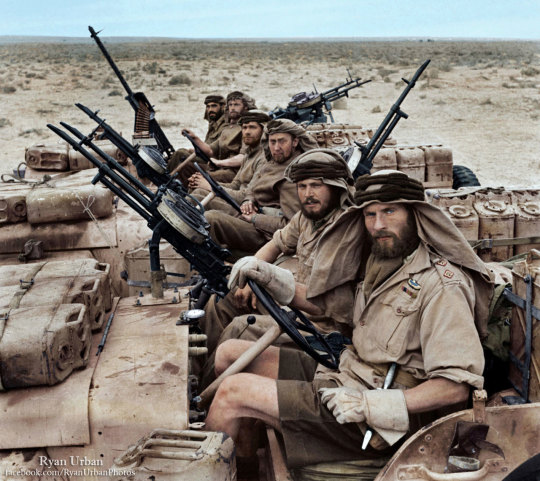
The Long Range Desert Group were themselves a kind of special operations unit conducting reconnaissance and the occasional raid of their own. A portion of their men and vehicles were next allocated to assist L-Detachment, and from that point forward Stirling’s force would be conveyed to their targets by their comrades in the LRDG. Gavin Mortimer’s book ‘Stirling’s Desert Triumph: The SAS Egyptian Airfield Raids 1942’ features an exchange between Mayne and one of his subordinates during a mission rehearsal in one of the 30cwt Chevrolet trucks they’d be using:
“’What direction are we driving in?’ (Mayne) suddenly said, turning to the front gunner. “The man stared at the stars, trying to figure out which star was which. At length he replied: “’North-east, I should say, sir’. “’Ha!’ exclaimed Mayne. ‘You wouldn’t get far if you had to walk back.’ “Changing gear, Mayne cast a sideways glance at his gunner and said quietly: ‘Mind you’re certain of your direction by tomorrow night’.”
At first, Stirling’s men were dropped off some distance from their targets and then approached on foot. The favoured method for destroying German planes in airfields – the main objective – was to attach and then detonate Lewes bombs. These had been created by one of their comrades, Lieutenant Jock Lewes.
But then a new method of operation was stumbled upon. During a raid on Bagoush airfield, in the Quattara Depression, Mayne had put bombs on 40 aircraft but only 22 of them went off. After examining some charges left over, he found that the primers had been inserted into their plastic sleeves too early – they’d been in there too long and had become damp.
From this problem came a series of solutions: They should just drive the LRDG vehicles right up to the target from now on to save time; they should, therefore, make sure the vehicles had machine guns mounted for protection; in fact, why not just drive the vehicles into the airfields and use the machine guns to destroy the planes instead?
This all came together in the raid on Sidi Haneish airfield on July 26/27, 1942. Two columns of nine jeeps each burst out of the night and whipped around the rows of Luftwaffe planes, riddling them with bullets before high tailing it back out into the darkness. 30 aircraft were left in ruins.
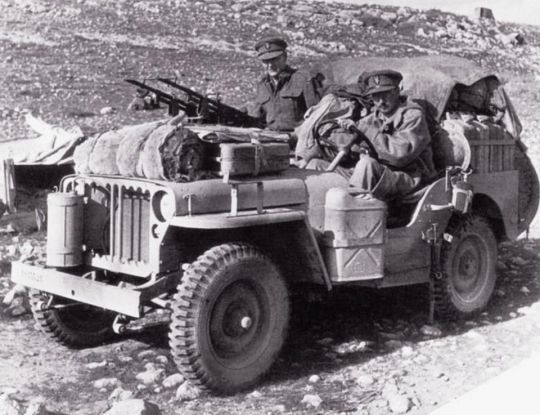
But the history of the SAS and Paddy Mayne wasn’t all spectacular desert raids.
Following the capture of Stirling and the migration of the war to Sicily and Italy, the nature of the fighting changed.
So too did Paddy.
L-Detachment had been re-designated as 1 SAS Regiment on September 28, 1942, and now Mayne, promoted to Major himself, was its standard bearer in Stirling’s absence. Contrary to his reputation as a stereotypical action hero, Ross says that Mayne’s side as solicitor now emerged as he came to be, in Ross’ view, probably a better administrator than Stirling. To be sure, an authoritarian side also emerged, but this too seems indicative of his care and commitment to professionalism, training and mission prep. He seems to have cared very deeply about men killed under this command and worked extraordinarily hard to prevent their deaths.
The SAS’ next incarnation as ‘the Special Raiding Squadron’ (SRS) was certainly very successful, as it worked its way over defensive positions in Sicily and then up the western side of the Italian peninsula. These actions are noteworthy for two things: Difficult objectives achieved and relatively low casualty rates, a testament to Mayne’s careful stewardship.
Augmented by the American landing in the east at Salerno on September 9, 1943, one of these actions took place at the Biferno river, behind which the Germans were making a stand. The SRS, along with Nos 3 and 40 Commandos were dispatched to Termoli to outflank them. No 3 Commando would establish a beachhead allowing No 40 Commando to capture the town and its harbour whilst the SRS continued on to take bridges. The subsequent fighting would be the stuff of Hollywood Second World War movies, featuring trucks set ablaze and Germans spilling out in alarm, along with encounters with hardened German paratroopers and skirmishes around farm buildings.
Despite the stiff and professional resistance, the Special Raiding Squadron lost only one killed, three wounded and 23 as MIAs. In return they inflicted casualties of 23 killed, 17 wounded and 39 captured, as well as taking ground north of the Biferno.
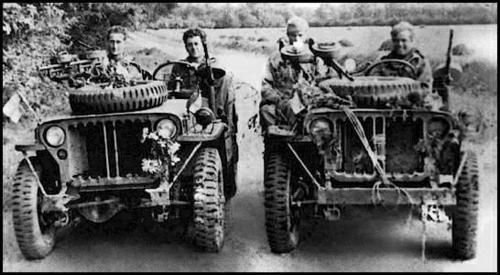
Next up was France. Here the SRS would be upgraded to 1 SAS proper, a battalion-sized force of about 1,000 men, as it served in the Special Air Service Brigade alongside 2 SAS (led by Bill Stirling, David’s brother) and two French parachute battalions and an independent Belgian parachute company (about 200 men). Just as Mediterranean operations had required the SAS to work under different circumstances and terrain, so too would a return to parachuting and work behind enemy lines in France test the unit. Gone (were the days) when teams of four men with water bottles and a handful of dates, lightly armed – a few grenades in their pouches and Lewes bombs in a haversack – set out to stalk an enemy airfield. They would need more equipment - not only more of what they’d had before, but more equipment than those used to logistical planning for the airborne troops seemed to realise.
Resupply by the RAF was thought about, as were jeeps – better for getting men around but harder to conceal. Men on foot might prove more stealthy in the new rubber-soled boots, but these left distinctive footprints that could be tracked and, in any case, problems had shown up in training (the uppers were known to separate from the soles). Training patterns also needed adjusting. Early on Mayne had fought to prevent the SAS from being turned back into a regular Commando unit.
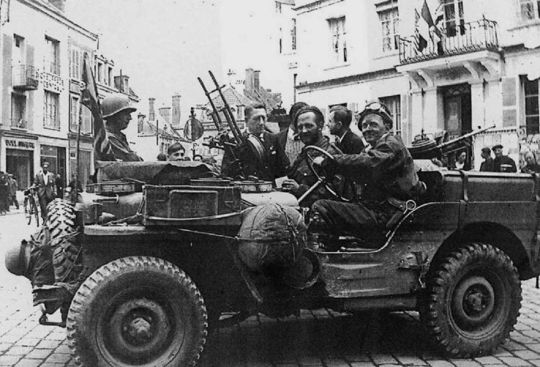
Now he was fighting amalgamation with the PARAs. Maroon caps were issued and his men instructed to wear them instead of their sand-coloured berets– Mayne told his men to hid the SAS berets in their packs until they could don them later out of sight of officials. On a more practical level too the SAS was butting up against what, by that point, had become conventional methods of training paratroopers. The latter had to learn to land in large groups during the daytime in open country, ready and able to engage in battle immediately. SAS parachutists needed to land in small teams, quietly and at night.
Mayne himself was involved in some of the war’s latter action. Most memorably on 10th April 1945, the push towards Berlin was underway. Near the village of Borgerwald, an SAS unit was ambushed and their commanding officer killed. Mayne took over the Jeep, manning the guns and some say he single-handedly rescued every wounded man by lifting them one by one from a ditch and into his jeep before destroying the enemy gunners in a nearby farmhouse. For this daring feat, he was recommended for the Victoria Cross. The citation was signed off by Field Marshal Montgomery himself but the award would elude Colonel Paddy. He received a 3rd bar on his Distinguished Service Order (DSO) and his name would be remembered as the stuff of legends.
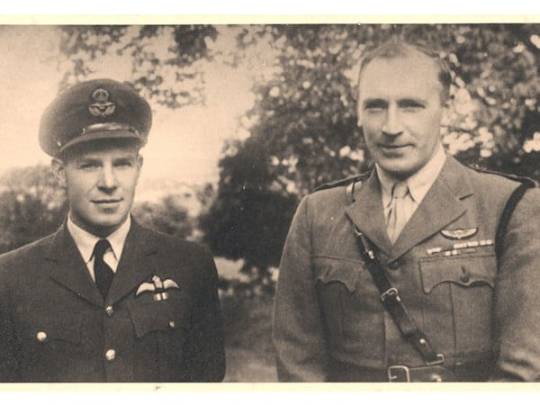
Paddy Mayne’s service with the SAS would end as it began, with his commander Major-General Bob Laycock – who had been the one to recommend him to David Stirling – writing to congratulate him on his DSO:
“My Dear Paddy, “I feel that I must drop you a line just to tell you how very deeply I appreciate the great honour of being able to address, as my friend, an officer who has succeeded in accomplishing the practically unprecedented task of collecting no less than four DSOs. (I am informed that there is another such superman in the Royal Air Force). You deserve all the more, and in my opinion, the appropriate authorities do not really know their job. If they did they would have given you a VC as well. Please do not dream of answering this letter, which brings with it my sincerest admiration a deep sense of honour in having, at one time, been associated with you. Yours ever, Bob Laycock.”
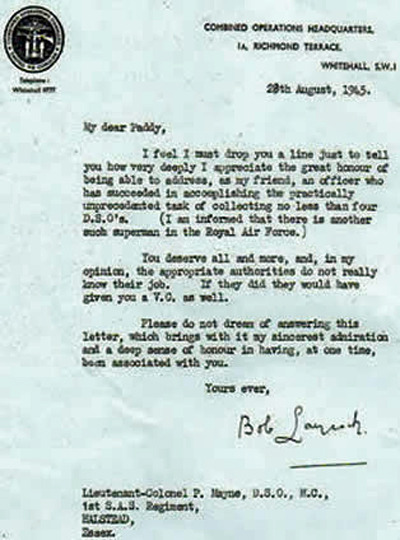
Looking back at his legacy, many have wondered why he didn’t get the Victoria Cross. George VI publicly expressed surprise that Mayne had not been awarded a Victoria Cross. Some say it was because hot-headed Mayne, who’d become Lieutenant Colonel by the end of the war, had punched the second in command in his battalion during one heated exchange. Others say it was down to a technicality - because the raid in question was multiple acts of bravery, not a single act. The official SAS historian Ben Macintyre suggests that Blair Mayne was denied the Victoria Cross either because of his brawling, his anti-Establishment streak or his alleged homosexuality (rumours rather than factually proven it must be stressed). Blair Mayne mistakenly thought Churchill had personally blocked him because of his history of brawling against military superiors and drunken behaviour that perhaps offended Churchill’s purist views of being an officer. The truth seems to be that Churchill was said to have been saddened and shocked by the omission.
In 2005, 50 years after Mayne’s death, an Early Day Motion in the House of Commons supported by 100 MPs, proposed that, “the Government mark these anniversaries by instructing the appropriate authorities to act without delay to reinstate the Victoria Cross given for exceptional personal courage and leadership of the highest order and to acknowledge that Mayne’s actions on that day saved the lives of many men and greatly helped the allied advance on Berlin.” It was defeated.
Perhaps there was no conspiracy though. Some historians of the SAS Regiment have laid out a common-sense case for precisely why one would expect Mayne not to have won the VC: Because doing so required independent witness testimonies of a recipient’s brave deeds from high-ranking officers. Special forces work, by its very nature, made reaching this bar highly unlikely. Heroism would have been commonplace, but, for the most part, it was clandestine and often independent of senior officers.
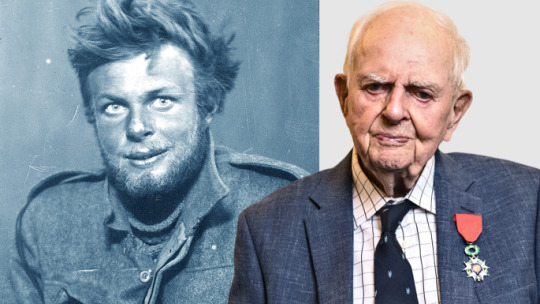
Mike Sadler, now close to 100 years old, is the last surviving member of the original SAS. His feats of bravery during the war read like a movie script. He was decorated with the French Légion d’honneur at 98 Years old in 2018 . Mike Sadler joined the Long Range Desert Group in 1941 and was based in the North African desert. Lieutenant David Stirling brought the SAS (Special Air Service) into service, and Mike Sadler was transferred to the new unit when they began launching raids in Libya. He became their top navigator as he had a unique talent for being able to navigate vast expanses of desert, without the aid of maps, to guide the raiding parties to their targets. He also served under Paddy Mayne from 1941 until the end of the war.
I have had the privilege to have met Mike on one or two occasions through both my older brother and father with whom they share a common friendship through military veteran circles (but belonging to different eras). Over a few lunches and dinners over the years, I was hooked on his anecdotes and was full admiration for his exploits.
Most memorably Mike recounted the time that while sitting in a restaurant in Paris surrounded by seven or eight soldiers Paddy Mayne took out a grenade, pulled the pin and placed it on the table. Several dived for cover but Sadler reckoned that Mayne wasn’t about to kill himself. He was right; Paddy had previously removed the detonator.
This atypical story added to the Olympian myth of Paddy Mayne. And yet the grenade incident in the busy café wasn’t the random act of recklessness it sounds like. There was method in the madness. Mayne was making an important point. Whilst responsible for French troops who were part of the Special Air Service Brigade in 1944, he’d been horrified by reports of improper handling of grenades. The French troops simply hadn’t been as familiar with infantry training as they should have been. So Mayne used the incident in the café to show it was possible to completely control a grenade if one knew what they were doing.
Sadler explained that like him all the men who served with Mayne had a huge respect and admiration, drawing from his comforting presence on missions. But for all that Paddy Mayne had no close friends, other than Eoin McGonigal, who helped persuade him to join the SAS and who was killed in the Benghazi raid, the very first SAS operation in 1941.
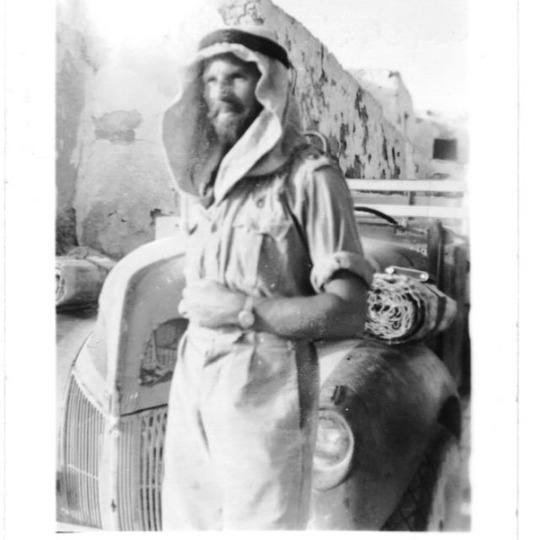
The sad truth is that Paddy Mayne cut a solitary figure, often to be found reading the darker poetry of AE Housman. Mayne was socially awkward with no idea how to talk to women even though they were attracted to this very big, athletic Irishman. He revered his mother and put women on a pedestal, refusing to tolerate swearing in their presence. He was shy until drink initially loosened his inhibitions but then transported him to far darker places. But for all that he wasn’t reckless with the lives of his men. He weighed up situations, was intuitively brilliant in terms of the guerrilla tactics he employed when orchestrating his night-time raids in customised jeeps deep behind enemy lines initially in Egypt and Libya.
Lieutenant-Colonel Robert Blair ‘Paddy’ Mayne was a fighting legend, and a pitiless killer in war. Even his comrades thought him cold-blooded and overly ruthless. Stirling thought Mayne had gone too far on occasions in killing the enemy. And yet Mayne typified the SAS recruitment policy, whose finds were the “sweepings of prisons and public schools”. In countless missions behind enemy lines, Major Paddy Mayne destroyed more aircraft than any fighter pilot on either side during the course of the war between Britain and Germany. He was to go on and become one of the most decorated British soldiers during the war.

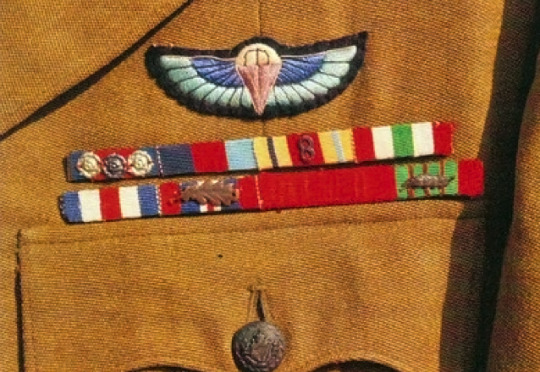
Ben Macintyre, author of ‘Rogue Heroes: an authorised history of the SAS’ wrote: “It is not a story of unalloyed British bulldog heroism. These people were tough as tungsten but they were also human and frail and huge mistakes were made.”
Such men of war are not made for peace time.
Mayne sought further adventure in an Antarctic expedition but had to return home prematurely with a debilitating back condition, the origins of which came from his war service.
He took up a position as secretary to the Law Society of Northern Ireland until, returning from a night’s socialising on December 14th, 1955, he clipped an unlit parked lorry, and crashed into a telegraph pole on the Scrabo road, a few hundred metres from his house. Paddy Mayne died at 40 years old. He is buried in Movilla Abbey graveyard.
Hundreds attended Mayne’s funeral. His life was and continues to be commemorated in books, film. A statue in his native Newtownards stands in his honour. The town’s western bypass is also named after him.

A remarkable and complex character, he crammed a great deal into a life largely spent in the service of others, some of whom would have regarded him as a hero, although he, himself, would not.
King George VI asked Paddy Mayne how it was that he had not received the Victoria Cross, and he answered in a manner that sums up this courageous and remarkable man:
“I served to my best my Lord, my King and my Queen, and none can take that honour away from me.”
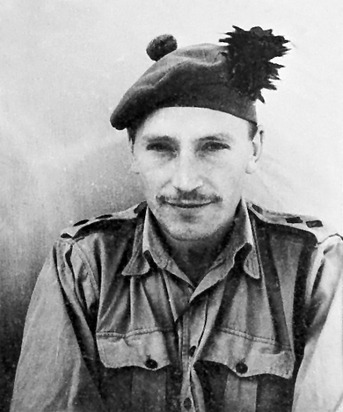
#paddy mayne#SAS#britain#military#special forces#army#world war two history#david stirling#mayne#special air service#history
417 notes
·
View notes